
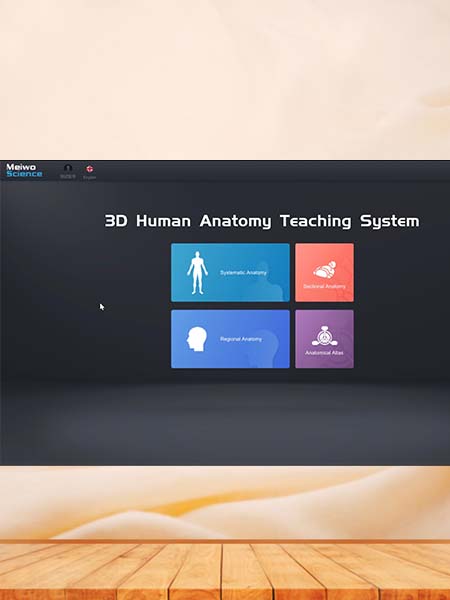
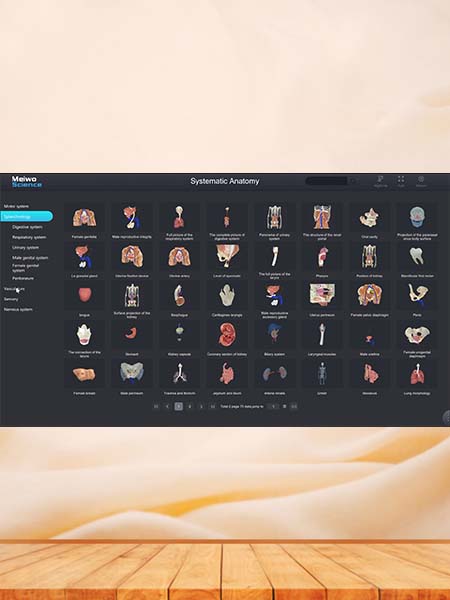
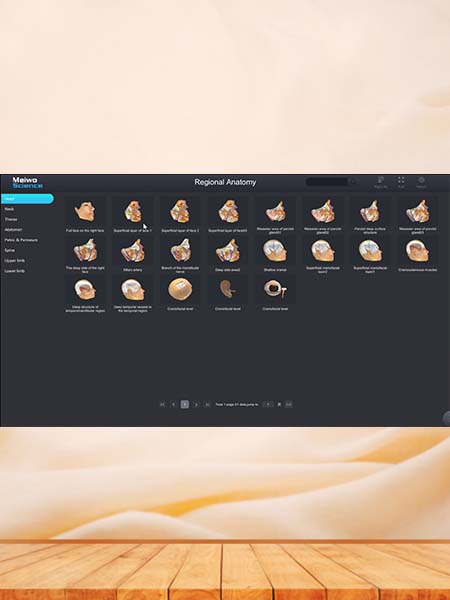

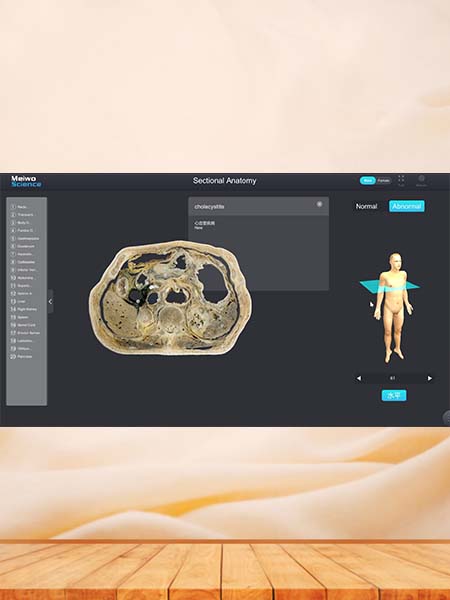
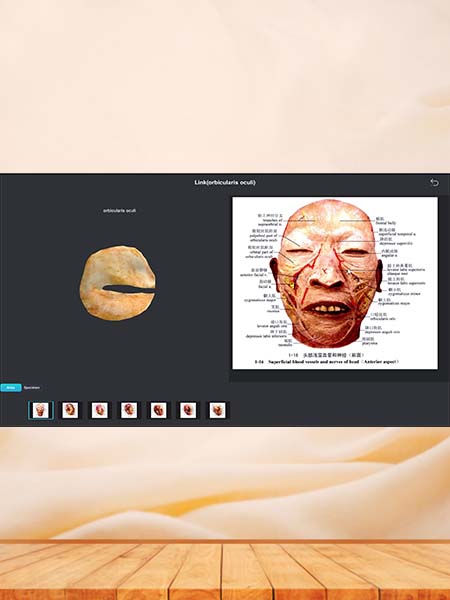


We’re here to help: Easy ways to get the answers you need
SEND E-MAIL Chat Now DOWNLOAD
Meiwo Human Anatomy Software Advantages
1. Meiwo 3D human anatomy software is developed using Unity3D engine combined with Max and Maya modeling software. The model uses real human body data for 3D data reconstruction, simulating a real anatomy teaching environment. Users can learn anatomy as if in a real environment, solving the drawbacks of traditional teaching demonstrations. The high degree of immersion and interactivity increases students' interest in learning and improves their autonomous learning ability.
2. This software has 4 modules: "Systematic Anatomy", "Local Anatomy", "Sectional Anatomy" and "Anatomical Atlas". The module architecture is flexible and extensible, and modules can be added according to the specific situation of the user.
3. The system breaks the drawbacks of traditional teaching and learning being limited by space and time, builds a networked, digital, intelligent, personalized, lifelong teaching system, and builds a learning platform where everyone can learn, learn everywhere, and learn at any time. The system has passed the Chinese Anatomy Society's physical specimen digital product identification certificate and has Chinese computer software copyright.
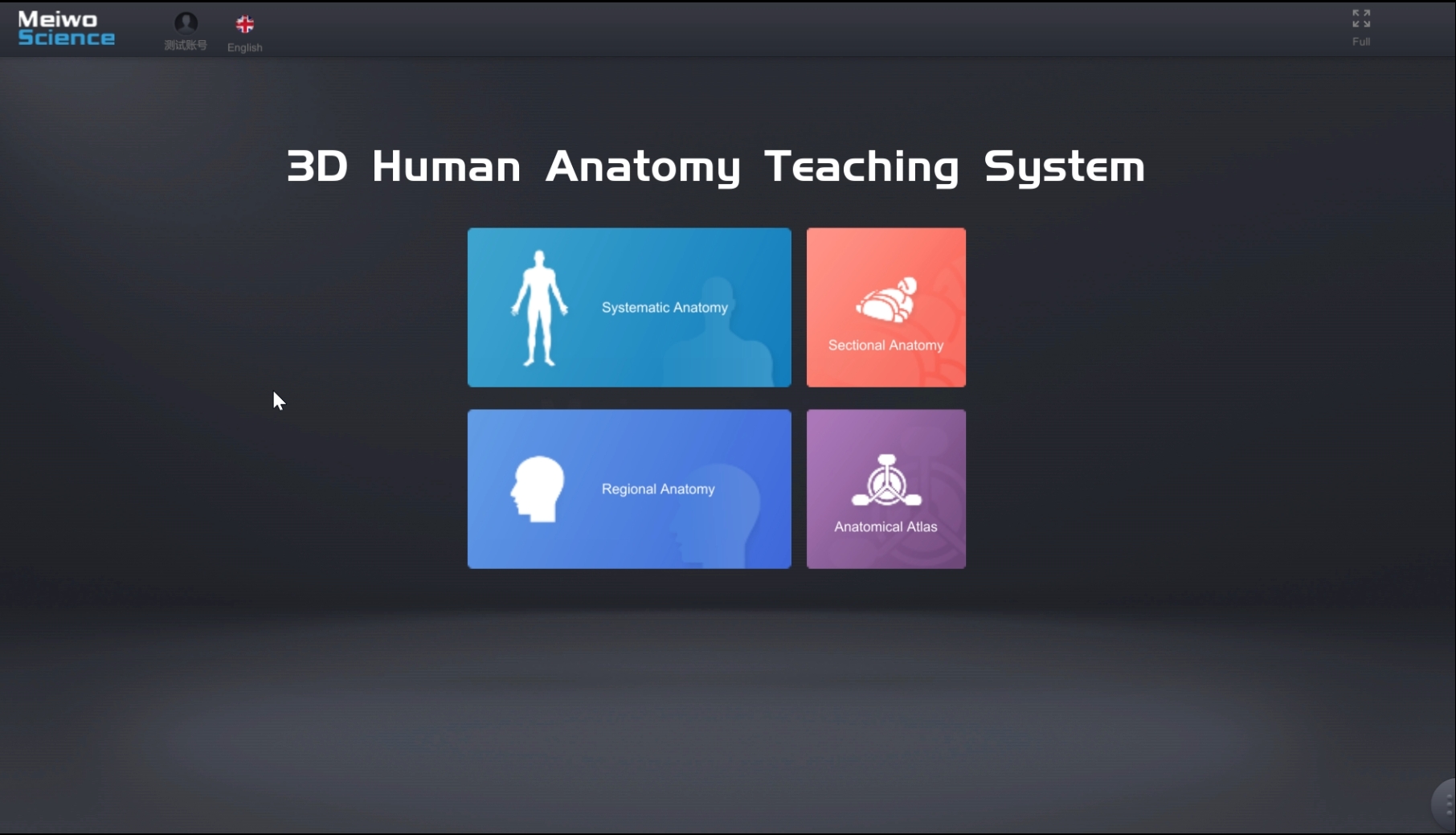
Human Anatomy Software Function and Advantages
1. Catalog structure:
Locomotor system includes: osteology, arthrology, myology;
Viscera includes: peritoneum, respiratory system, urinary system, male reproductive system, female reproductive system, digestive system;
Vascular system includes: lymphatic system, cardiovascular system;
Sensory organs include: vestibulocochlear organs, visual organs;
Nervous system includes: brain and spinal cord capsule blood vessels and blood circulation, endocrine system, central nervous system, peripheral nervous system.
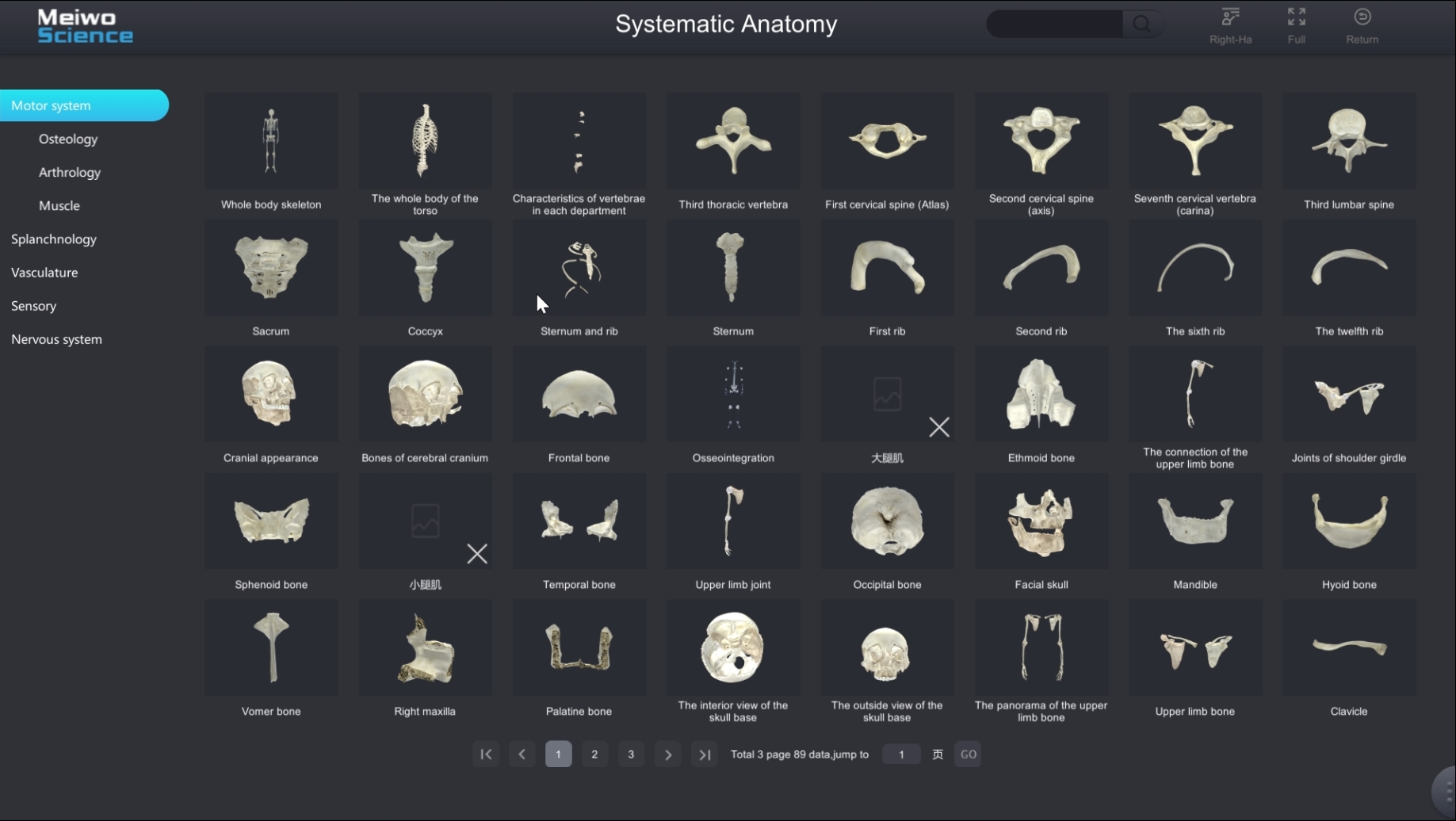
The regional anatomy modules are divided into: head, neck, chest, abdomen, pelvis and perineum, spinal region, upper limbs, and lower limbs.
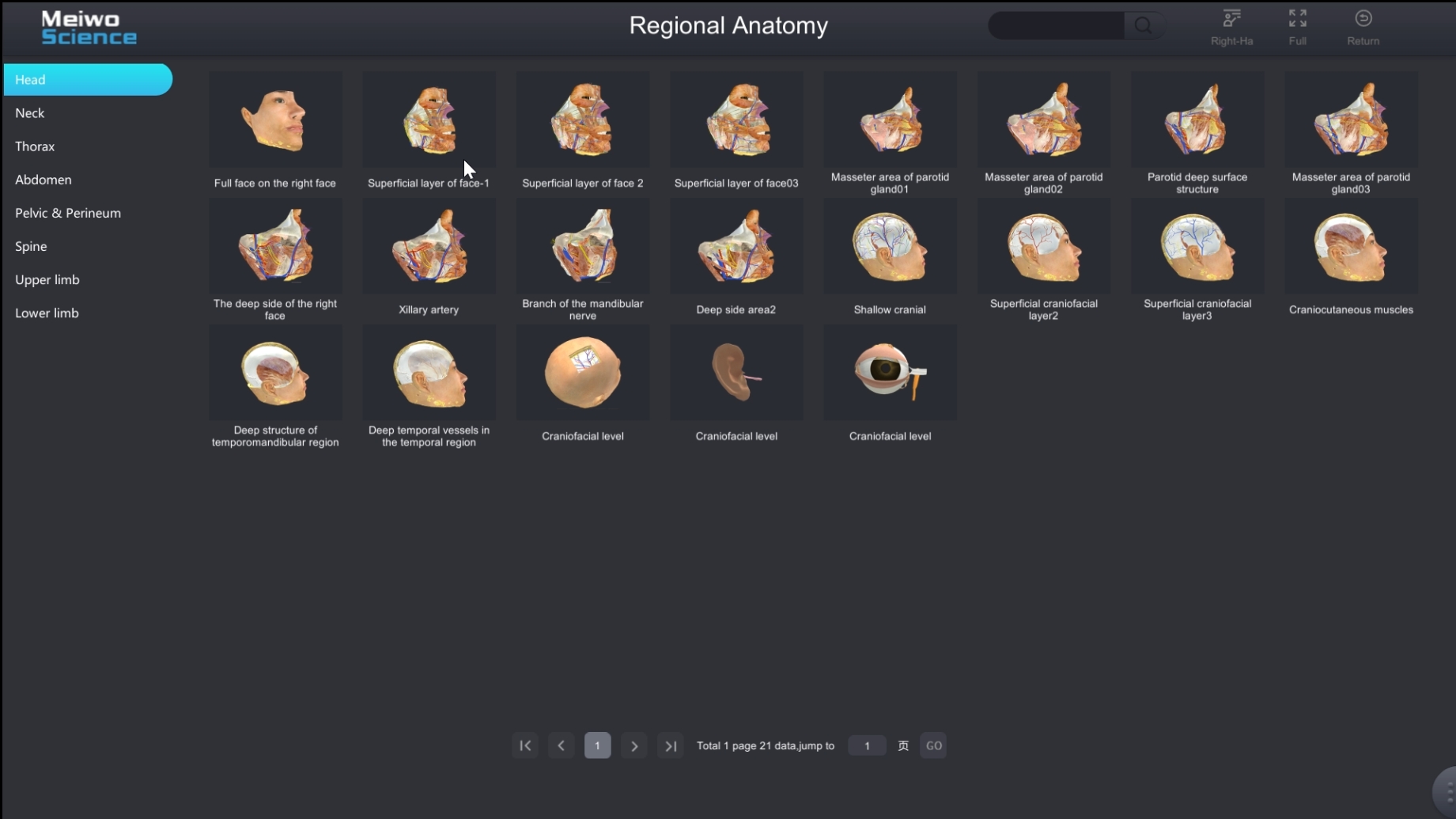
Sectional anatomical data must provide whole-body section data for males and females, including horizontal, sagittal, and coronal sections, and should be no less than 3,700 slices.
Pathological section specimens are horizontal section data for severe cerebral hemorrhage, with no less than 13 slices of cerebral hemorrhage, including transcapsular hemorrhage, thalamic hemorrhage, and cerebellar hemorrhage. Each pathological section must be marked with key structures, and the total number of slices must be no less than 97.
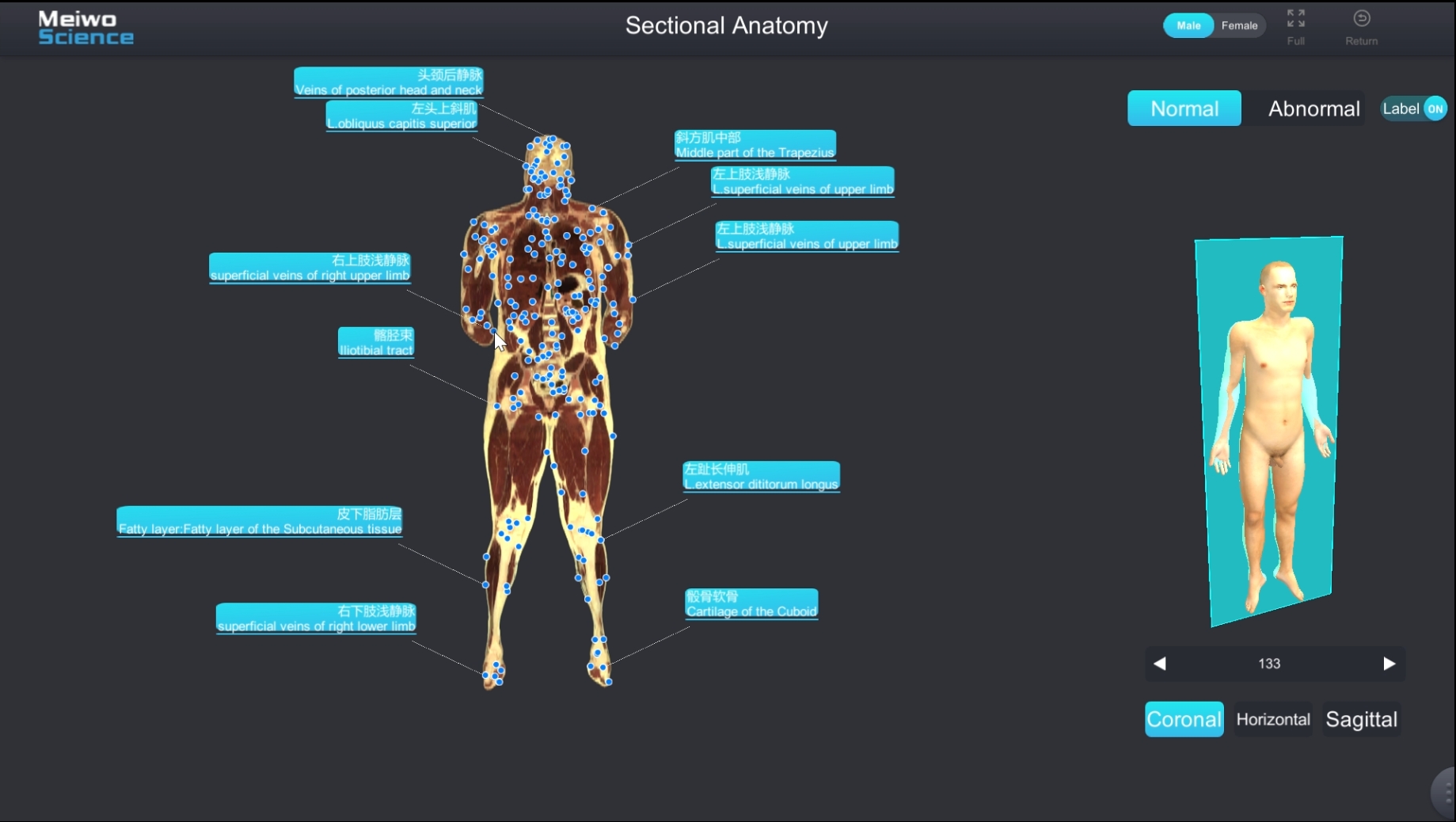
2. The system uses real cadaver specimens for 3D data collection. The details of each structure can be realistically presented and the real cadaver specimens can be split and combined. For example, the start and end shape of each muscle and the texture of the myofilaments can be clearly displayed, fully ensuring the authenticity and professionalism of the anatomical software.
3. Functions include: structure directory, automatic rotation, annotation, search, volume adjustment, separate display, hiding, restoration, stripping, split combination, coloring, transparency adjustment, screenshot, background change, etc.
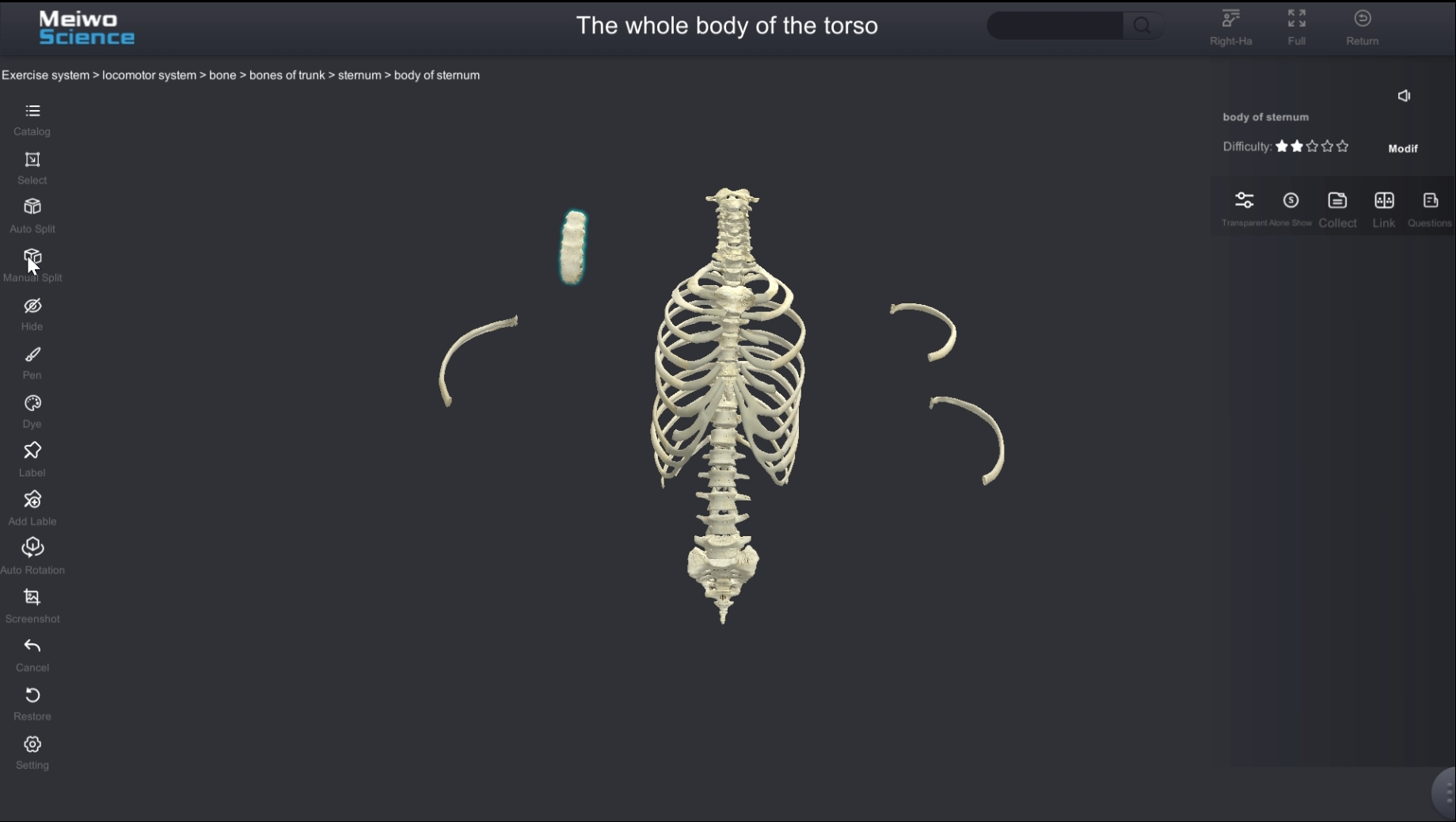
4. The system provides a structure linking function to display the location of the same structure in different specimens and atlases, and provides pictures and specimen association comparisons.
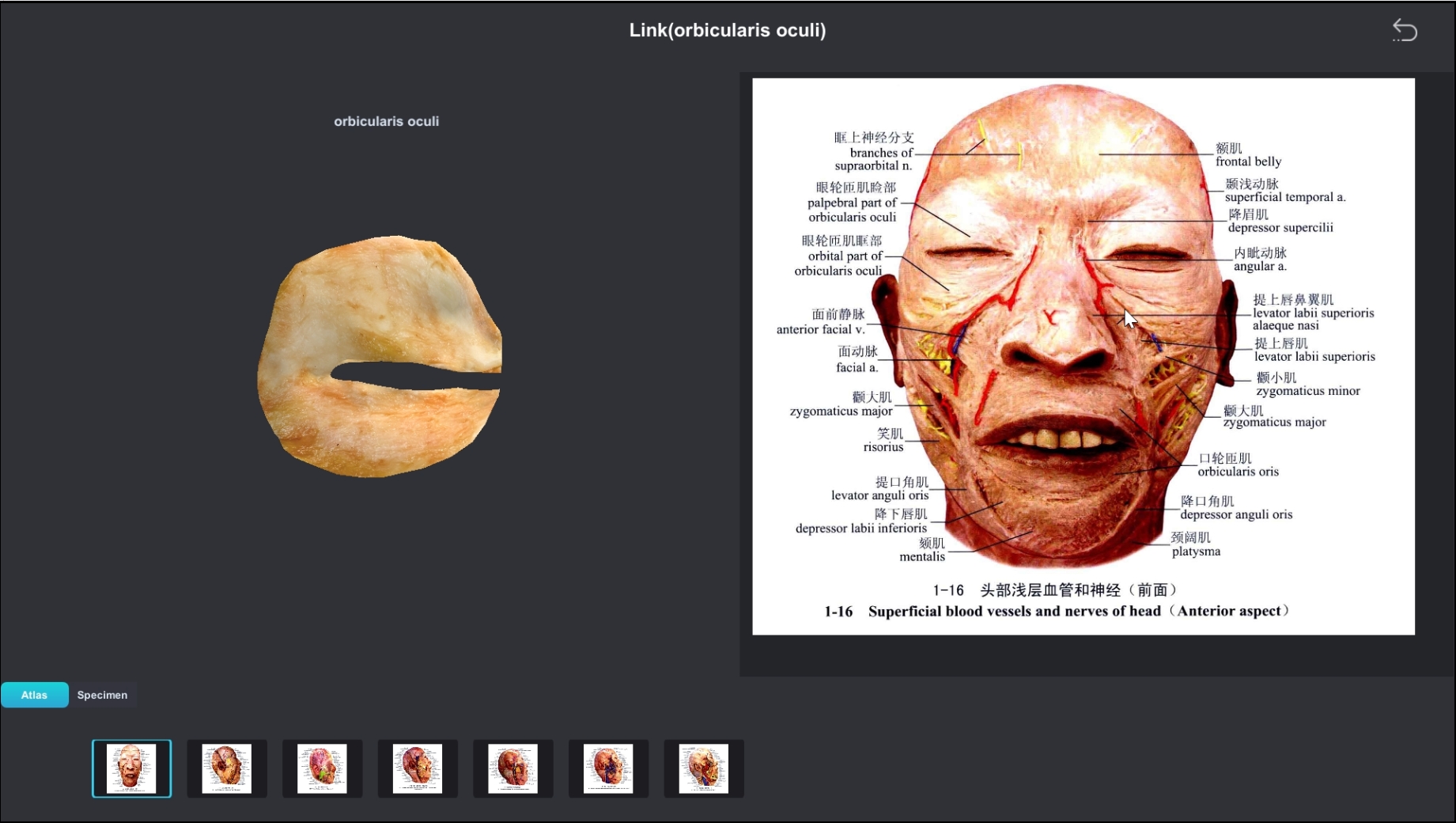
5. The system provides more than 10,000 anatomical structures, any of which can be displayed or hidden, showing only the structures you want to see, with unlimited free splicing and combination, all controlled by the user, achieving layer-by-layer dissection and completely reproducing the entire process of human anatomy.